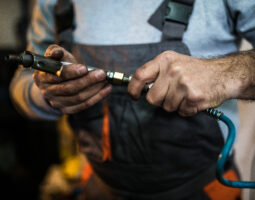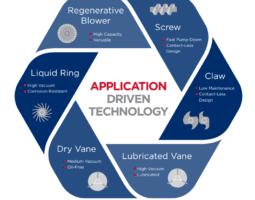Preventative maintenance is essential to manufacturing efficiency – and with the rising cost of energy, parts, and overall operations, proactive measures can save businesses significant time and money. That being said, there are many faults found in rotating equipment that are often overlooked during inspections; misalignment and imbalance being the two most common.
Preventative maintenance enhances production capacity. When businesses fall behind on upkeep, they sacrifice both quantity and quality. Additionally, short-term efficiencies don’t typically translate into long-term savings and may result in increased repair expenses or costly downtime. By performing maintenance functions before machines are expected to fail, businesses can schedule repairs around production schedules rather than machine failures.
When companies are ready to invest in new equipment, they should look for systems that offer an integrated approach to diagnostics, alignment, balancing, and certification of results. Proper equipment pays for itself in time, saving, and results. Recent improvements to machinery design, balancing and alignment procedures, tools, and certified installation and rebuilds greatly extend the life of machines and their components, too. And while quality equipment is essential, it’s only the first step in ensuring uptime within business operations.
Businesses must also have a properly trained employee base. Ill-equipped employees can be extremely costly – training ensures the understanding of processes and the correct use of resources to achieve maximum results in the minimum amount of time. Additionally, standardized processes are easier to teach, more repeatable, and easier to troubleshoot and improve. Plus, when managers and engineers know every part of an operation, they’ll have more realistic job expectations.
Finally, documentation is possibly the most important part of the process. As understood in the manufacturing industry, if you measure something, it will improve. Tracking machine performance offers insight into overall vibration, amplitude, specified balance and alignment tolerance, the average number of bearings replaced per month, and more. Documentation also helps identify recurring machinery problems to best know how to correct them, rather than just treating the symptoms. While it may be boring, documentation is essential to the success of your program; it can help refine an approach and/or justify the results of an operation.
The Process of Field Balancing Requires Multiple Starts of Equipment:
1. Baseline reading – Verifies imbalance as the main cause of vibration
2. Trial run(s) – Adds weight temporarily, tracks changes in amplitude and records phases for vectoring the proper weight and location for correction.
- The number of trial runs depends on the number of balance planes (weight locations) used to correct an imbalance.
- The majority of applications require two-plane balancing
3. Correction run – Adds or removes weight permanently
- These weights can be welded, clamped, or drilled and tapped to affix to the rotating component.
- They can be removed by drilling or grinding.
4. Trim run – Brings balance into tolerance range through slight weight changes; this process may be necessary after a correction run
Single run balancing can be achieved once a piece of equipment has gone through the field balance process and influence coefficients have been recorded.
The following list of equipment (plus much more!) can be balanced:
- Centrifugal fan
- Squirrel cage fans
- Cooling tower fans
- Large ventilation fans
- Vertical motors
- Hammer mills, mixers, and other process rotating equipment are candidates for field balancing as well.
If equipment reacts as expected, it may only require the minimum number of starts. Oftentimes, though, equipment is not in the best condition due to structural and mechanical issues. It may require additional runs to lower the vibration to an acceptable level. Customers will be notified of additional corrective measures that should be taken prior to balancing. Limited access to rotating components, operating temperatures, safety protocols, maximum starts per hour/day, etc. can drastically increase the required time to complete work.
Practice proactivity
Ultimately, being proactive about maintenance is essential to the long-term health of your machines. Preparedness will not only save you from costly downtime and repairs, it’ll also allow you to make updates at a time that is financially and practically convenient for you.
Cullum and Brown is your go-to equipment distributor and service provider for all your balancing needs.

